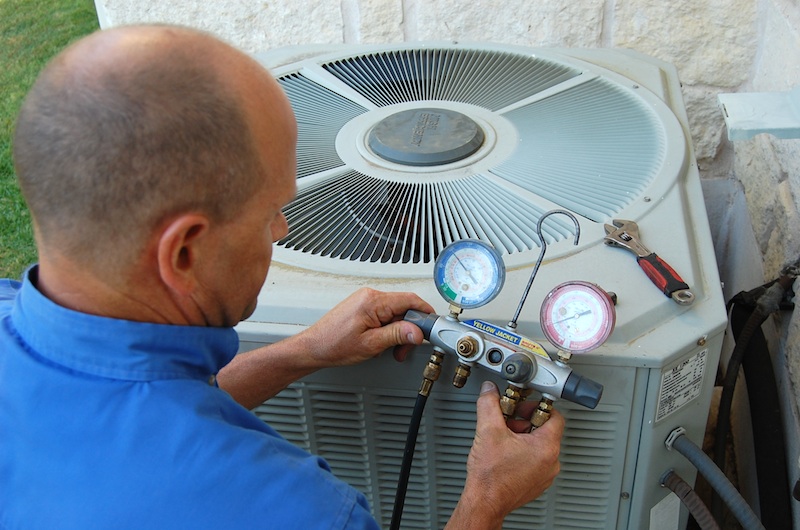
On a hot 95+ degree day, no one wants to deal with melted ice cream. That’s why we have air conditioning!
Hot weather here in Austin means trips to Barton Springs, bike rides, and cookouts on the patio with tall iced beverages. It’s all fun in the sun until your air conditioning goes out.
Below we’ll take a look at some of the most common AC problems and offer some tips for basic air conditioner troubleshooting.
How air conditioners work
Air conditioning systems cool air using an evaporator coil within your inside AC unit. Inside the coil is a refrigerant such as Freon that cools down the coil. The AC unit draws in warm air and blows it over the coil, where the refrigerant absorbs the heat and the newly chilled air is sent back into your home. The hot refrigerant is cycled outside your home to the compressor unit where it transfers the heat outside, and then gets condensed and returned back into the inside unit.
If your air conditioning unit stops blowing cold air, it’s a great idea to try some basic troubleshooting before calling for a repair. It could be that the cause of the problem is simple enough for you to fix on your own.
Common causes of A/C failure

Blocked air flow. If there’s little to no air getting to the unit, the condensation on the evaporator coils will freeze up.
The first thing to do is to check your air filters. If they’re dirty, you’ve likely found the culprit, as this can cause the unit to freeze up.
Next, check the evaporator coil within your indoor unit. Turn off your AC at the thermostat and then remove the front panel of the unit. If there’s frost on the coils inside, that’s what’s causing your unit to malfunction.
Usually, this problem can be easily resolved by turning off the unit long enough for the coils to defrost, usually about 90 minutes. Run the fan to help speed the process and keep air moving, but the “cool” setting should not be engaged on your thermostat during this time.
Refrigerant leaks. Unit leaking Freon can freeze up due to lower pressure within the system. To resolve this particular issue, you will need to get a certified HVAC company to add more Freon and fix the leak. Depending on the location and nature of the leak, however, it could be a sign that the unit needs to be replaced. Monitor your AC performance after any such maintenance, and if it happens again, it might mean it’s time for a new unit.
Clean out the condensate drain. When AC units run, they not only lower the inside air temperature but also remove humidity. This moisture then drains through a small pipe to the outside. Over time, algae or insects seeking moisture can clog this drain, and that in turn causes your unit to shut down.
You can pour a mixture of equal parts water and household bleach into the drain pan to clean out the line.
Check the compressor outside. When the A/C unit kicks on, the outdoor compressor should start to run, and you should hear the motor and be able to see the fan turning inside. If it isn’t running, check your unit for a reset or overload switch (not all have them).
You can also try spinning the fan blades clockwise with a screwdriver. If it’s not working, you may have a faulty capacitor that will need to be replaced. It’s also possible that the unit has shorted out due to an animal climbing inside the unit. A professional HVAC technician will need to inspect the unit if it’s not turning on.
Don’t suffer through a hot summer with a failing AC unit
If you’ve run through our list of AC troubleshooting tips and can’t resolve your problem, it’s time to call out professionals to inspect your AC unit. At ABC Home and Commercial Services Austin, we can send out experienced HVAC staff to provide all necessary servicing and repairs. Also, it’s a great idea to schedule AC tune-ups with our technicians before you run into any trouble during the busy summer season.